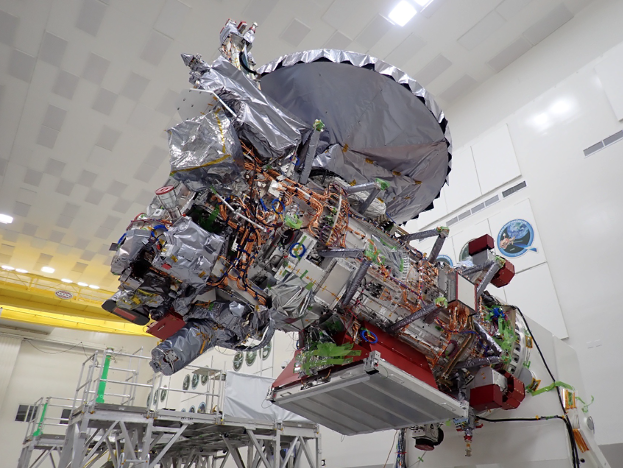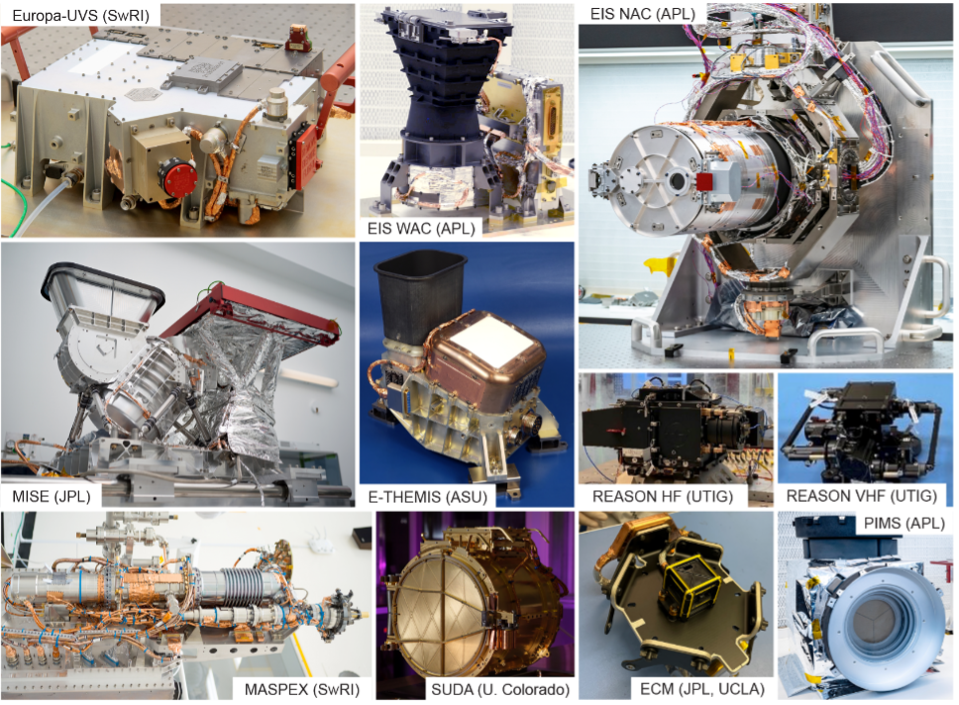Europa Clipper: The Final Countdown
- 1Johns Hopkins Applied Physics Laboratory, Laurel, Maryland, United States of America (haje.korth@jhuapl.edu)
- 2Jet Propulsion Laboratory, California Institute of Technology, Pasadena, California, United States of America
Introduction: In October 2024, NASA’s Europa Clipper will launch on a journey to explore the habitability of Jupiter’s moon Europa. At the beginning of the next decade, the spacecraft will orbit Jupiter, flying by Europa nearly 50 times over a four-year period to: (1) Characterize the ice shell and any subsurface water, including their heterogeneity, ocean properties, and the nature of surface-ice- exchange; (2) understand the habitability of Europa’s ocean through composition and chemistry; and (3) understand the formation of surface features, including sites of recent or current activity, and characterize high science interest localities. In addition, the search for current activity cross-cuts these three principal science objectives.
Flight System: The Flight System (Figure 1) comprises the Propulsion Module, which provides the thermally-controlled spacecraft structure, propulsion subsystem, and solar array (not shown); the Avionics Module, which enables spacecraft guidance, navigation, and control operations, provides power conditioning and computer resources which stores and prioritizes science data for downlink; the Radio-Frequency (RF) Module, which provides telemetry uplink and science data downlink capabilities; and a highly capable suite of remote-sensing and in-situ instruments (Figure 2) to achieve the science objectives of the mission. The spacecraft is solar-powered with large batteries for use during the flyby and playback periods, uses reaction wheels for precise attitude control, and has a bipropellant system for propulsion and coarse attitude control. The Avionics Module consists of a radiation vault, nadir platform, and secondary structures. The module supports multiple instruments, components, and elements from other modules. The vault provides radiation protection and thermal interface control to internal electronics, and mounting support for various external instruments and spacecraft components. The telecom system includes a high-gain antenna for communication at X- or Ka-band, a co-aligned medium-gain, three low-gain antennas, and three fan beam antennas.

Figure 1: Europa Clipper flight system
Instrumentation: The remote sensing payload consists of the Europa Ultraviolet Spectrograph (Europa-UVS), the Europa Imaging System (EIS), the Mapping Imaging Spectrometer for Europa (MISE), the Europa Thermal Imaging System (E-THEMIS), and the Radar for Europa Assessment and Sounding: Ocean to Near-surface (REASON). The in-situ instruments are the Europa Clipper Magnetometer (ECM), the Plasma Instrument for Magnetic Sounding (PIMS), the SUrface Dust Analyzer (SUDA), and the MAss Spectrometer for Planetary Exploration (MASPEX). Gravity and radio science will be achieved using the spacecraft’s telecommunication system, and valuable scientific data will be acquired by the spacecraft’s radiation monitoring system. All instruments are body mounted, and the spacecraft points the remote sensing instruments toward nadir during most of the flybys, while the in-situ instruments face the ram direction at closest approach. The MISE instrument has an internal mirror that further allows it to scan along-track to compensate for target motion when close to Europa. The narrow-angle camera has a two-axis gimbal to allow for acquisition of stereo coverage and to extend its field of regard to off-nadir targets.

Figure 2: Europa Clipper suite of instruments
Mission Status: The assembly, testing, and launch operations (ATLO) phase is in its final stage. System-level testing has been completed at the Jet Propulsion Laboratory, and the flight system has been integrated with the solar array at Kennedy Space Center. The Operations and Mission Readiness Reviews have been successfully completed, and the Europa Clipper will be encapsulated in the Falcon 9 Heavy rocket in early October. The launch period begins on 10 October 2024, and once lifted off, the Europa Clipper will be cruising to the Jupiter System with gravity assists by Mars followed by Earth on the way. Go Europa Clipper!
How to cite: Korth, H., Pappalardo, R., Buratti, B., Craft, K., Daubar, I., Howell, S., Klima, R., Leonard, E., Matiella Novak, A., and Phillips, C.: Europa Clipper: The Final Countdown, Europlanet Science Congress 2024, Berlin, Germany, 8–13 Sep 2024, EPSC2024-120, https://doi.org/10.5194/epsc2024-120, 2024.